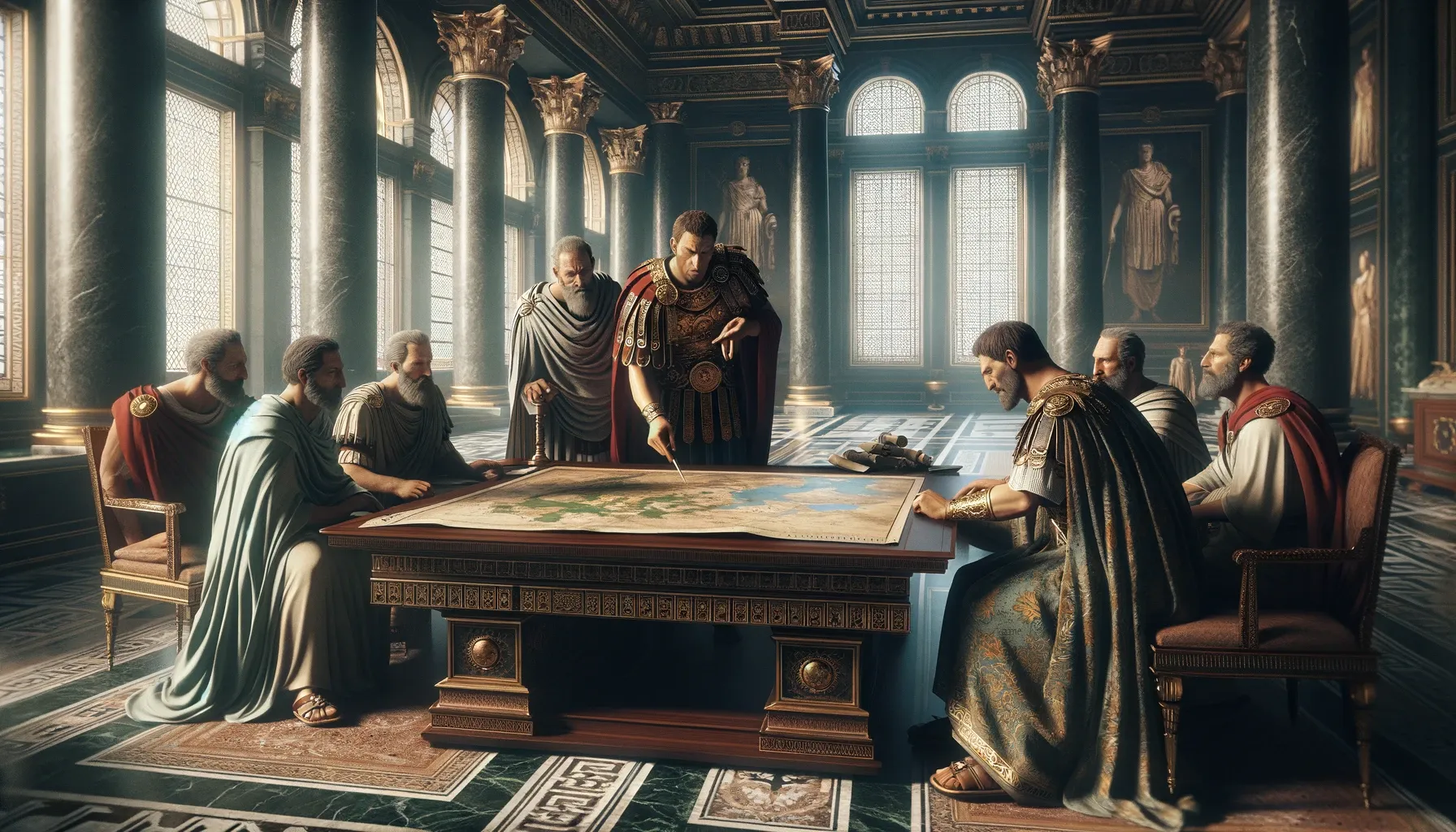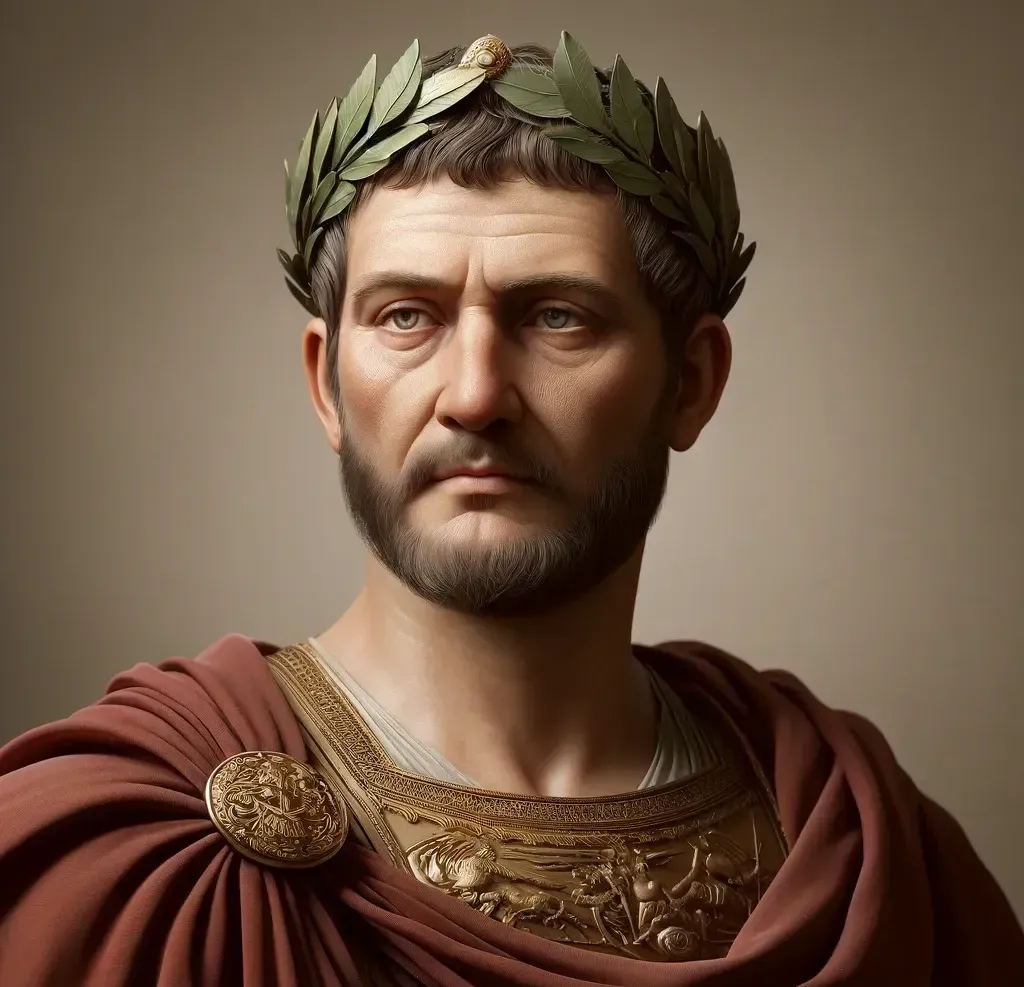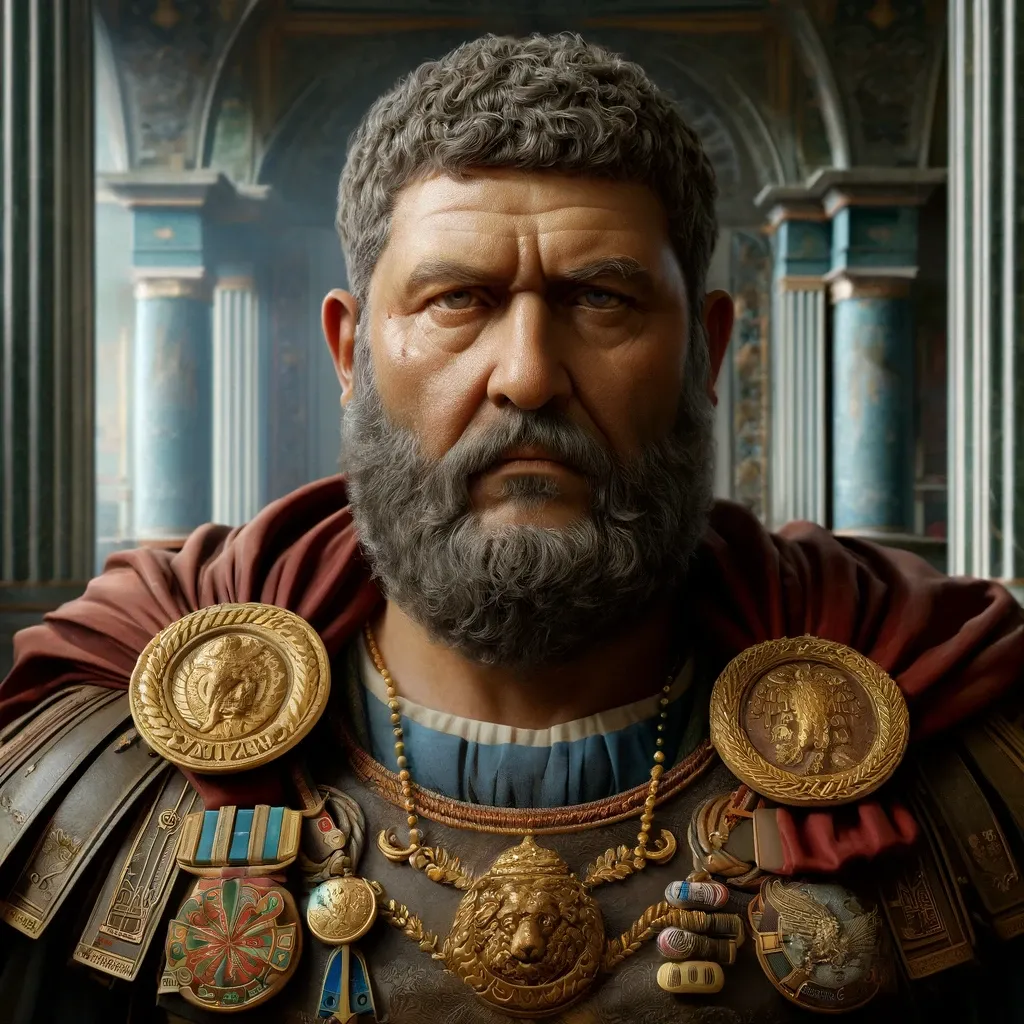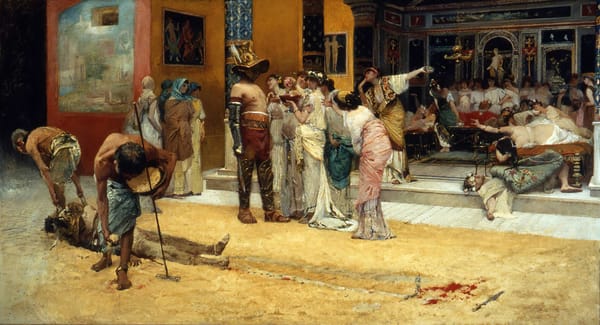Diocletian: Architect of the Roman Empire's Renewal
Diocletian rescued the Roman Empire from collapse. A blend of authoritarian and master planner, his legacy continues to evoke intense debate and admiration.

Gaius Aurelius Valerius Diocletianus, known simply as Diocletian, ascended to the throne of the Roman Empire in 284 AD, marking the end of the Crisis of the Third Century—a tumultuous period characterized by civil war, economic instability, and external threats. His reign until 305 AD introduced significant reforms that recalibrated the empire’s structure and governance, setting a foundation for stability and prosperity that extended well beyond his abdication. We're going to delve into the life of Diocletian, examining his rise to power, the reforms he implemented, and his lasting impact on the Roman Empire.
Rise to Power
Just before he was born, the Roman Severan dynasty had granted undue power to the army. As a result, almost anyone popular with the troops could declare themselves emperor. In 235 AD when the last Severan Emperor Alexander Severus was assassinated all hell broke loose. One man after another was raised by the legions and promptly murdered.
Born to a family of low status in the Roman province of Dalmatia, Diocletian's ascent to power is a testament to his military prowess and political acumen. Climbing through the ranks of the Roman army, his leadership qualities and victories against Rome’s enemies distinguished him. In 284 AD, following the assassination of Emperor Numerian, Diocletian was proclaimed emperor by the army. Recognizing the vastness of the challenges facing the empire, he embarked on a series of groundbreaking reforms.
Diocletian's ascent to the imperial throne was emblematic of the era's tumult. A formidable military leader, revered by his forces, he was declared emperor by his legions in Nicomedia (present-day Turkey). Aware of the peril that accompanied the imperial title, given that most emperors met their end through assassination shortly after their elevation, Diocletian swiftly moved to consolidate his position.
After triumphing over the forces led by Carinus, the son of the preceding emperor, Diocletian took the unconventional step of naming a co-emperor, Maximian, without any familial ties to him, selecting him solely based on his capabilities and merits.

Tetrarchy: A New System of Governance
During the 3rd century AD, Rome experienced a period of prolonged anarchy which almost destroyed the Empire. During a 50-year period, there were at least 60 claimants to the throne and many emperors ruled for only a couple of months. There were so many wannabe emperors at this time that historians are still unearthing coins minted by unknown claimants.
One of Diocletian’s most revolutionary reforms was the establishment of the Tetrarchy, or "Rule of Four," in 293 AD. Understanding the empire's extensive territories were too vast for a single ruler to manage effectively, Diocletian divided the empire into two parts, each governed by an Augustus.
He appointed Maximian as his co-Augustus to rule the Western territories while he managed the East. Each Augustus then appointed a Caesar—Galerius and Constantius Chlorus, respectively—to assist and succeed them. This system aimed to ensure an orderly succession and distribute the administrative load, but it also sought to deter usurpation by presenting a united front of four rulers.
Economic and Administrative Reforms
Diocletian grappled with severe hyperinflation throughout his tenure, a challenge that had been compounded by decisions made by previous emperors. Initially, Septimius Severus attempted to increase the money supply by diluting the silver denarius with less valuable metals, thereby producing more coins. This decision set off a chain reaction that devalued Roman currency significantly over time.
Subsequent emperors continued to debase the currency, reducing the silver content to merely a superficial coating. By the time Diocletian assumed power, the devaluation had led to widespread reliance on a barter system in many regions, as the Roman currency had lost its value and trust among the populace.
To address the economic turmoil, Diocletian issued the Edict on Maximum Prices (Edictum de pretiis rerum venalium) in 301 AD, which aimed to curb inflation by setting price caps on goods and services. Although it was largely ineffective due to enforcement difficulties and the complexity of the empire’s economy, it represented a significant attempt at state-directed economic control.

Moreover, Diocletian dramatically increased the size of the government to more effectively administer the empire's territories. He divided the empire into smaller administrative units—dioceses and provinces—to enhance control and efficiency. This expansion of the bureaucracy not only provided jobs but also tied the prosperity of the elite to the stability of the imperial government.
Military Reforms and Defense Enhancements
Recognizing the continuous threats on the empire's frontiers, Diocletian expanded and reorganized the Roman military. He increased the number of legions and fortified the frontiers with a series of walls and forts. The reforms aimed to create a more mobile and responsive military force capable of dealing with both external invasions and internal threats.
Religious Policies and Persecution of Christians
Diocletian's reign was marred by harsh measures and perceived tyranny, particularly in his dealings with Christians. His paramount concern for the empire's stability led him to target what he saw as sources of decline, including religious practices. Christianity's surging popularity, possibly a reaction to difficult times, alarmed him. He saw the shift away from worshipping traditional Roman deities like Jupiter — believed to safeguard the state — as a potential cause of divine displeasure.
Diocletian was infamous for his severity. His military campaigns, such as the siege against a rival emperor in Egypt, demonstrated his ruthlessness, with orders to continue the slaughter until the blood reached his horse's knees. This brutal approach extended to his crackdown on Christianity: scriptures were destroyed, religious assemblies banned, and many believers executed. To demonstrate allegiance to Rome, all subjects were compelled to make sacrifices to the imperial cult. Such actions made Diocletian a figure of intense loathing among later Christian writers.
Legacy and Retirement
Diocletian stands out as the sole Roman emperor to willingly step down from power, choosing to retire to his palace where he is said to have devoted his remaining years to gardening.
His legacy, however, remains a topic of debate among historians. The effectiveness of his tetrarchic system, which aimed at ensuring orderly succession through the appointment of junior co-emperors, had mixed outcomes. Despite his efforts, the intended smooth transition did not endure beyond his reign. Although his strategy of dividing governance among multiple rulers was adopted in various forms thereafter, the practice of emperors appointing their offspring as successors often overshadowed his administrative innovations.
Diocletian stands out as the sole Roman emperor to willingly step down from power, choosing to retire to his palace where he is said to have devoted his remaining years to gardening.
His legacy, however, remains a topic of debate among historians. The effectiveness of his tetrarchic system, which aimed at ensuring orderly succession through the appointment of junior co-emperors, had mixed outcomes. Despite his efforts, the intended smooth transition did not endure beyond his reign. Although his strategy of dividing governance among multiple rulers was adopted in various forms thereafter, the practice of emperors appointing their offspring as successors often overshadowed his administrative innovations.









About the Roman Empire Times
See all the latest news for the Roman Empire, ancient Roman historical facts, anecdotes from Roman Times and stories from the Empire at romanempiretimes.com. Contact our newsroom to report an update or send your story, photos and videos. Follow RET on Google News, Flipboard and subscribe here to our daily email.
Follow the Roman Empire Times on social media: